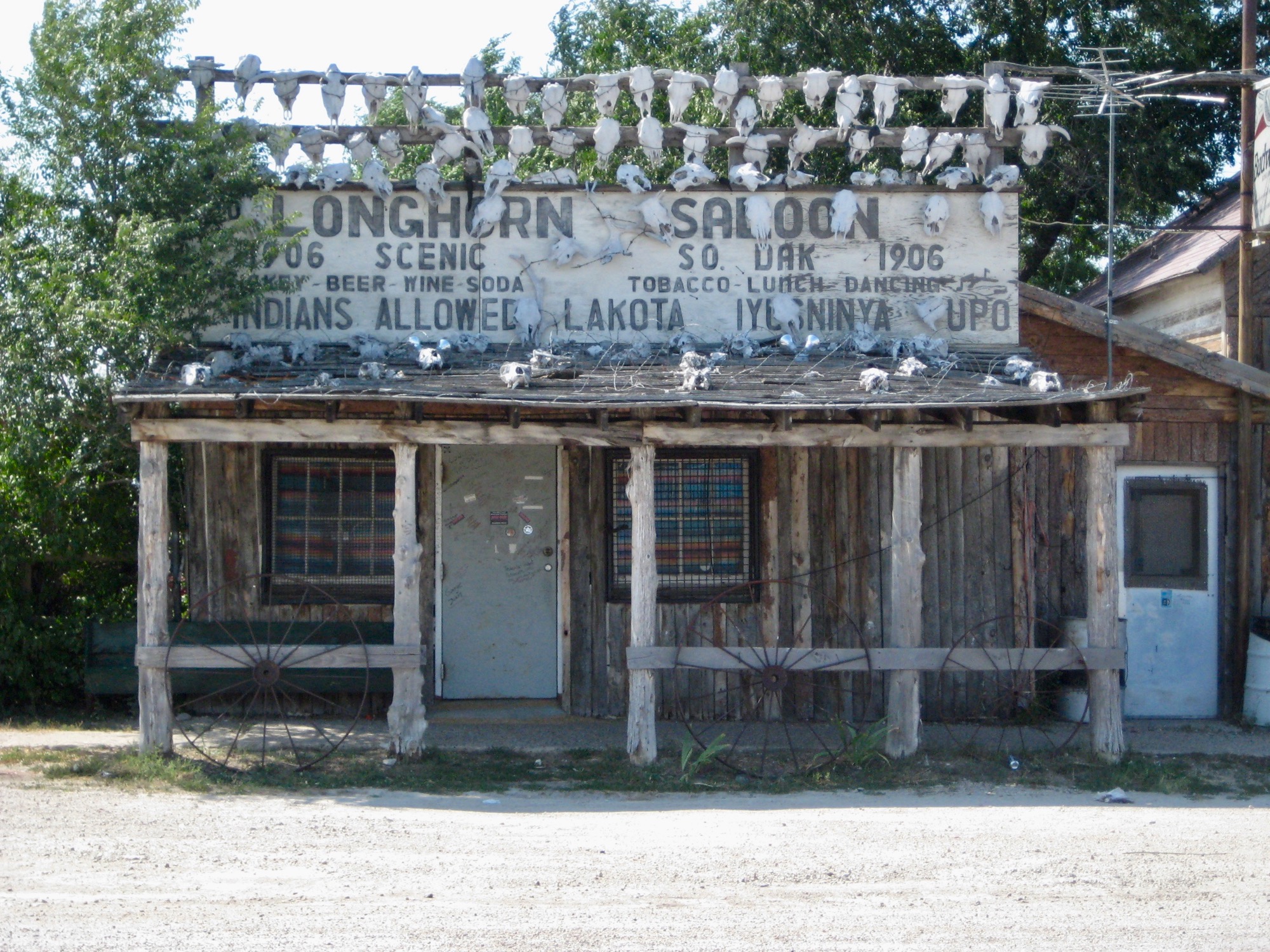Notes from Indian Country
Scenic and the Main Street bars of Rapid City
By Tim Giago (Nanwica Kciji – Stands Up For Them)
If you are traveling west from the Pine Ridge Reservation the first border town you run into is Scenic.
Scenic gained notoriety from the Longhorn Saloon that has played a large part in its history. The saloon had a large wooden sign posted at the front of the bar with its name and the message “No Indians Allowed” carved into the wood.
There was plenty of hollering about racial discrimination when new comers to South Dakota first saw that sign, which indeed smacked of racism. But taken in its historical concept one would have to know that in the early days of Scenic and in all of South Dakota for that matter there was a federal law prohibiting the sale alcohol to Native Americans.
The end of alcohol prohibition for Native Americans came in 1953. Native Americans were allowed to be served and drink alcohol across the country and reservations would be allowed the presence of alcohol–barring tribal regulations. Despite the passage of this legislation, certain tribal nations, such as the Oglala Sioux Tribe, maintained prohibition on their reservations for public health and safety reasons.
On August 13, 2013, the Pine Ridge Indian Reservation voted to end prohibition and legalize alcohol so the tribe could use the profits for education and treatment. After that voting process was complete, the result was 1,843 for legalization and 1,683 against it. So although the majority vote approved the sale of alcohol on the reservation the results of that election have never been implemented. Pine Ridge is still a dry reservation.
 The Longhorn Store in Scenic, South Dakota, offered "Lakota Artifacts." Photo: Pi3.124
The Longhorn Store in Scenic, South Dakota, offered "Lakota Artifacts." Photo: Pi3.124
When the sale of alcohol to Native Americans was legalized by federal law the Longhorn Saloon in Scenic removed the “No” from its sign so it now reads “Indians allowed.”
The Longhorn Saloon in Scenic continued on the road to notoriety when American Indian Movement leader
Russell Means was formally charged with murder in the shooting death of a Kyle man on March 11, 1975. Also charged in the death of Martin Montileaux, was Richard Marshall, of Allen, South Dakota. Marshall was sentenced to prison and an all-white jury acquitted Means.
The day the sale of alcohol became legal in 1953 the local daily newspaper published a photo of two Lakota men standing outside of the Buffalo Bar on Main Street each holding a beer. There is an old tale about a Lakota man named Dickie Gerry who walked into the Buffalo Bar before the sale of alcohol to Indians was passed, took a seat at the bar and ordered a beer.
The bartender sized him up and said, “I’m sorry, but we don’t serve Indians here.” Gerry replied, “I’m not Indian, I’m Mexican.” The bartender replied, “Say something in Mexican.” Gerry responded, “Give me uno beero.” Quipped the bartender, “Hit the road, Indian.”
Rapid City’s Main Street used to be the “street of bars” in the 1940s and 1950s. There was the Silver Spur, the Roundup and Stockmen’s Bar lining Main Street back then. Stockmen’s was a bar that would be considered upper class because its owner, a man named Bruce, kept it that way. It was the place most frequented by the local ranchers. And then there were the bars like the aforementioned Buffalo Bar where a fist fight would break out every hour on the hour. The Casino, the Coyote and the Silver Saddle were some of the other bars in town.
I was much too young to frequent any of the bars, but my Uncle Pete used to load my cousins and me into his car on a Saturday night and park us right in the center of Main Street where we could sit in the car and observe all of the shenanigans carried out by the boozing revelers. We all laughed our heads off the night a man and woman emerged from one of the bars and the man pushed the woman and she fell to the pavement. She hopped up and said, “I’m going to whip you from A to Z.” That became our battle cry that summer.
There was a World War going on back then and Rapid City’s Main Street was usually filled with Army and Air Force guys on Saturday nights. Ellsworth AFB was an Army and Air Force Base back then. Plus there were a lot of service men and women home on leave in Rapid City adding to Main Street’s party nights. And so border towns like Rapid City and Scenic had their heyday back then and life wasn’t that bad.
Tim Giago, an Oglala Lakota born, raised and educated on the Pine Ridge
Reservation and is the founder of the Native American Journalists Association.
He was a Nieman Fellow at Harvard with the Class of 1991. He can be reached at
najournalist1@gmail.com
Content copyright © Tim Giago
Join the Conversation


